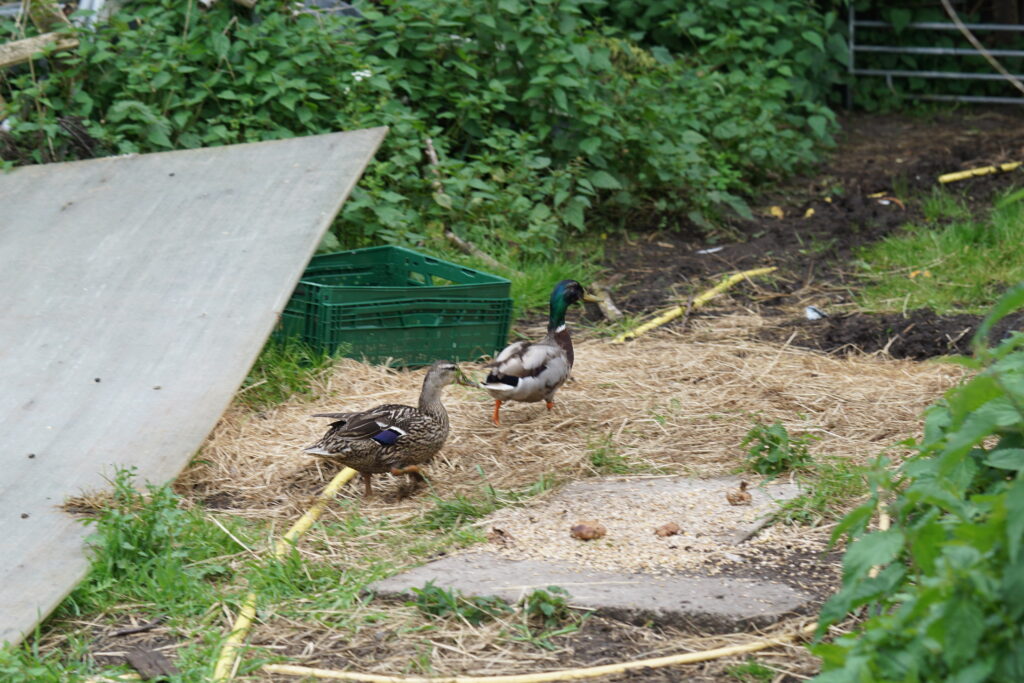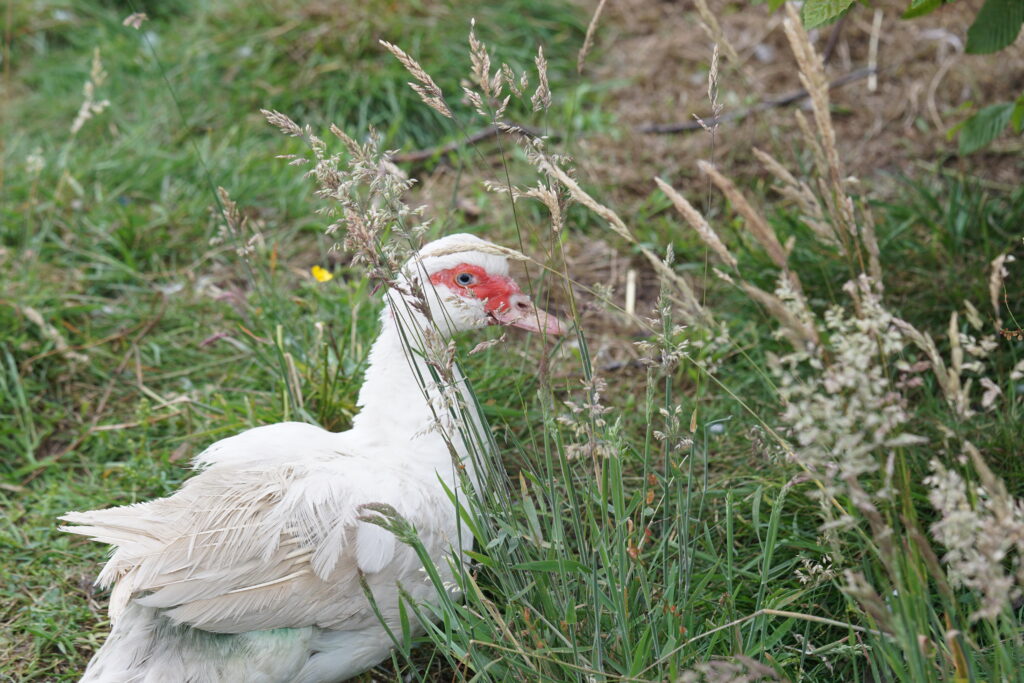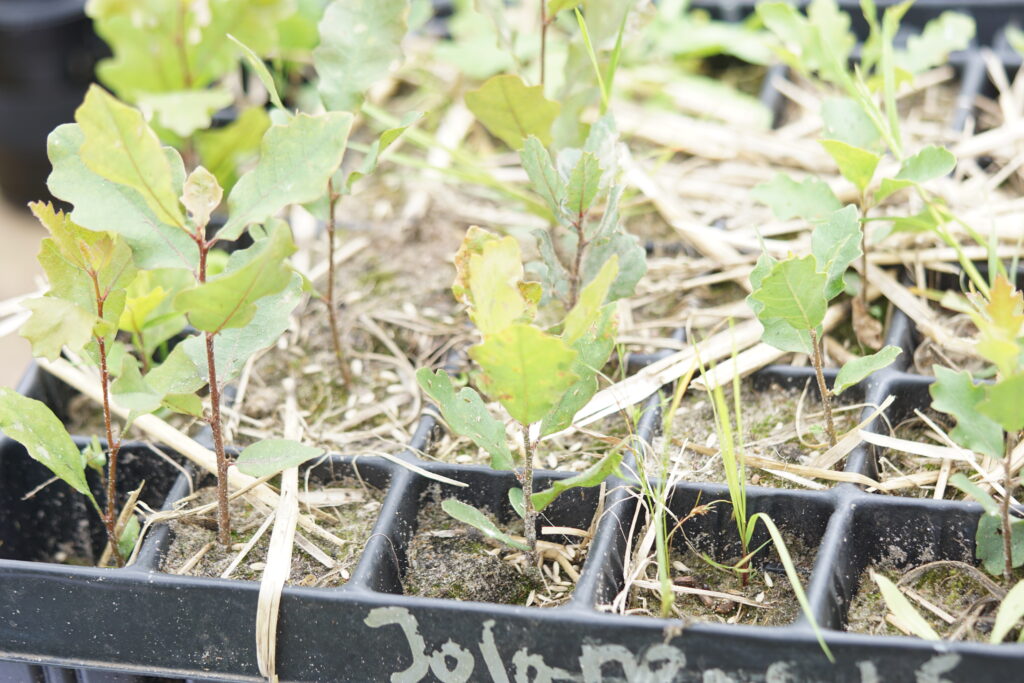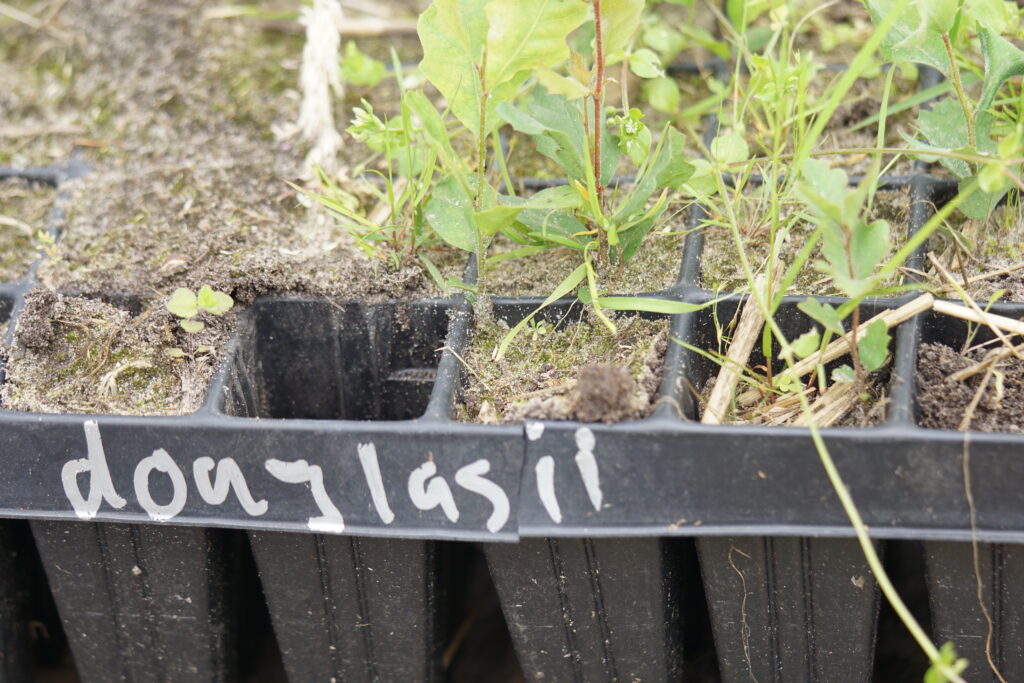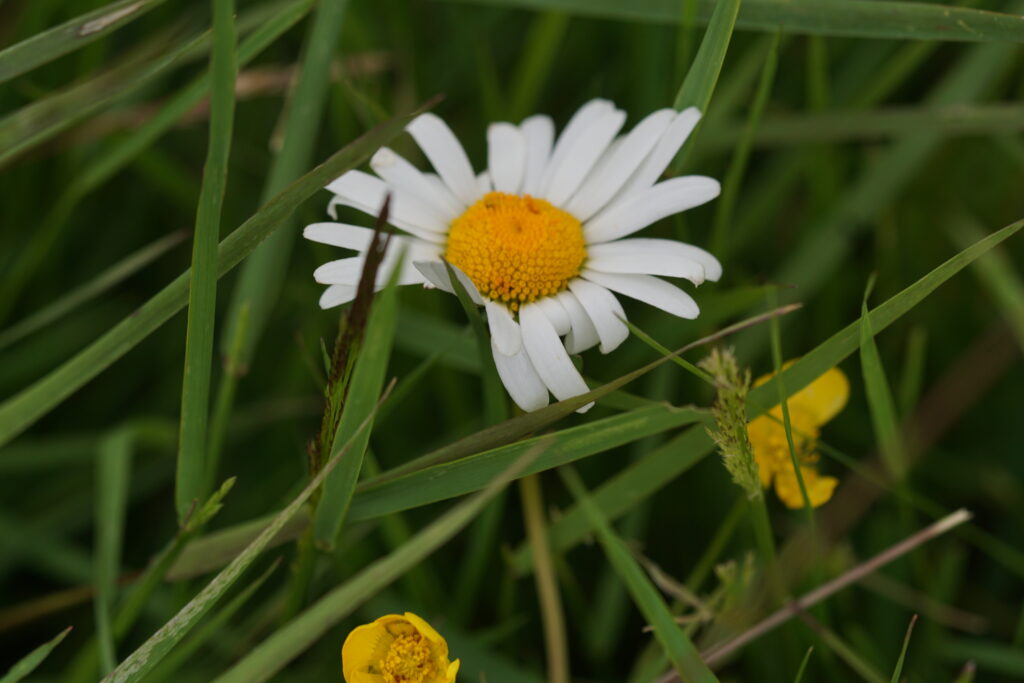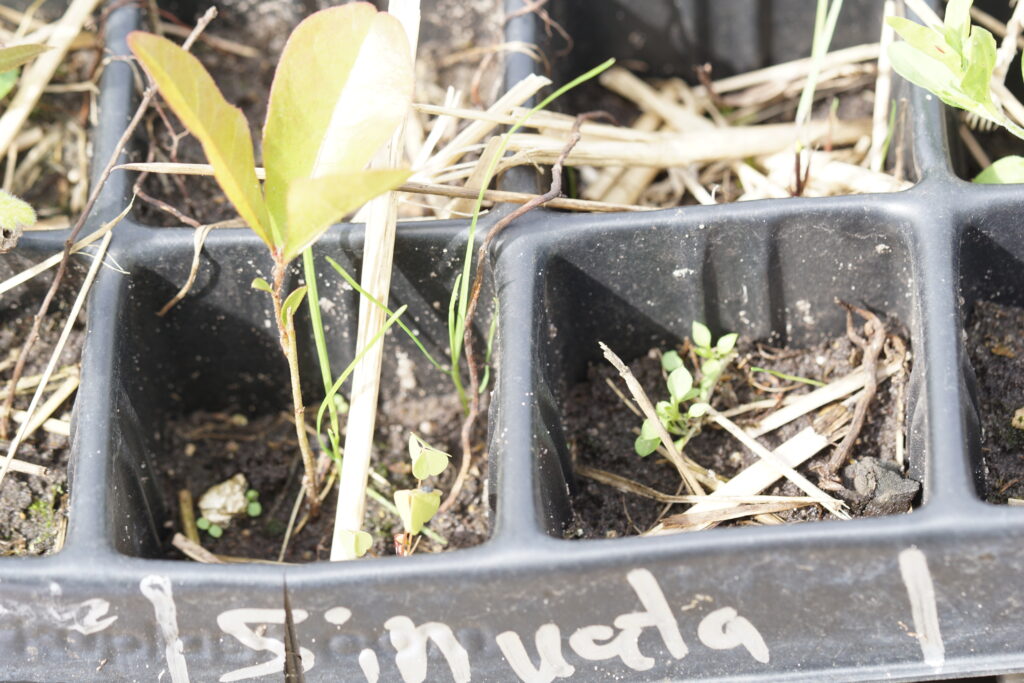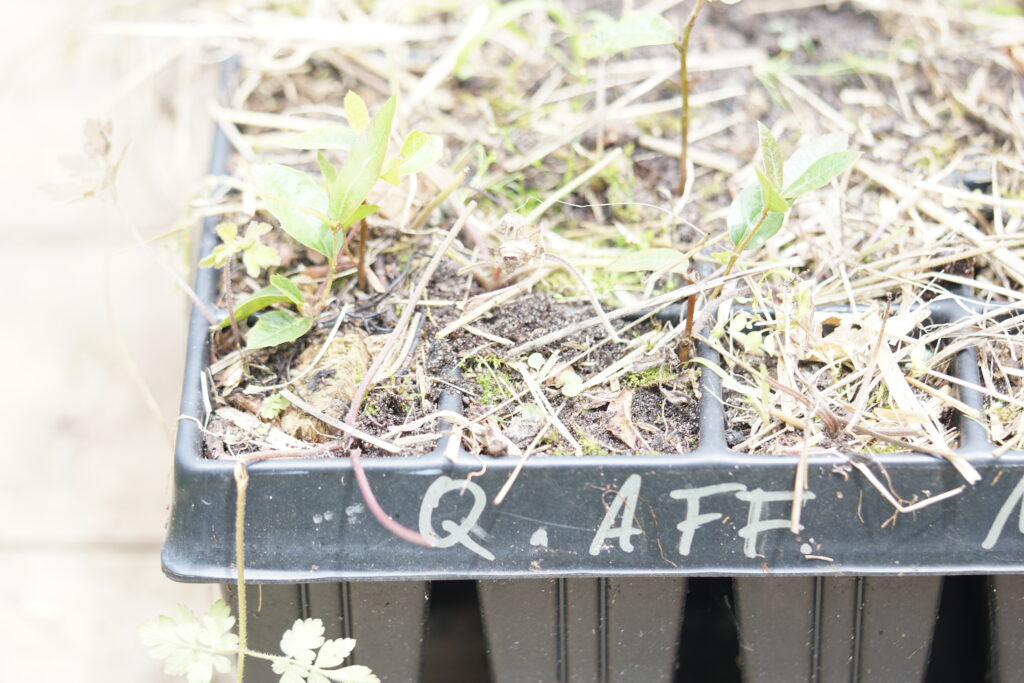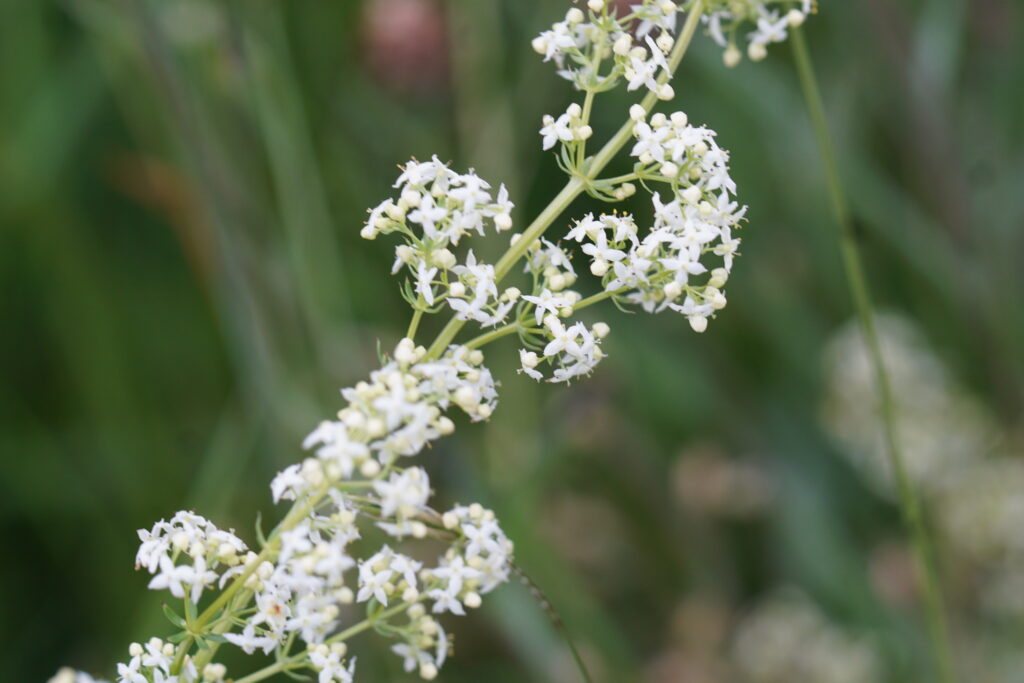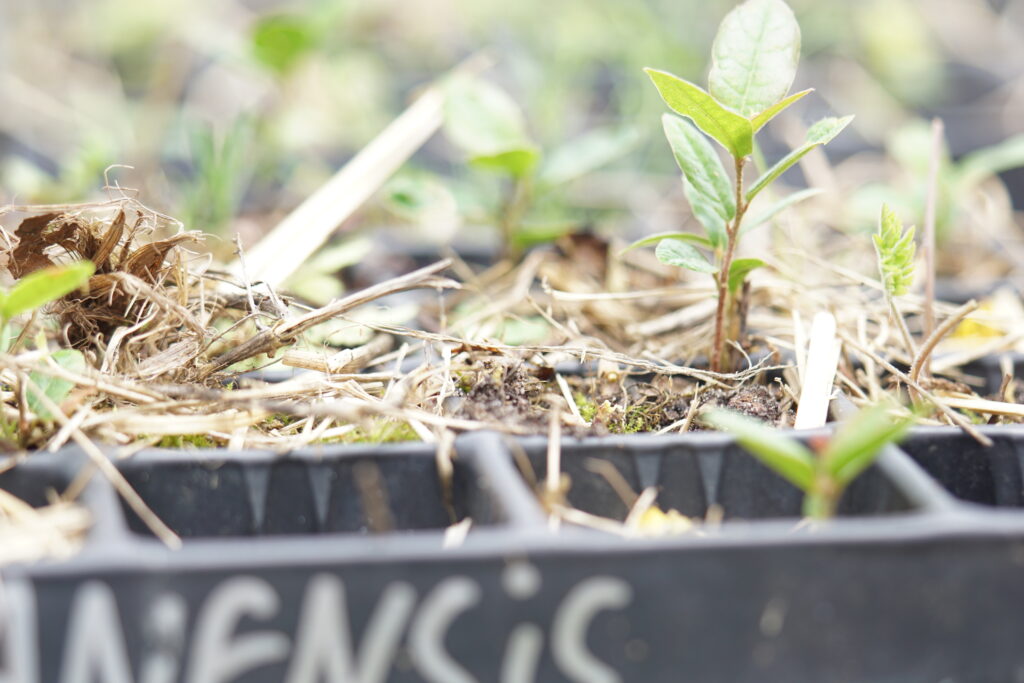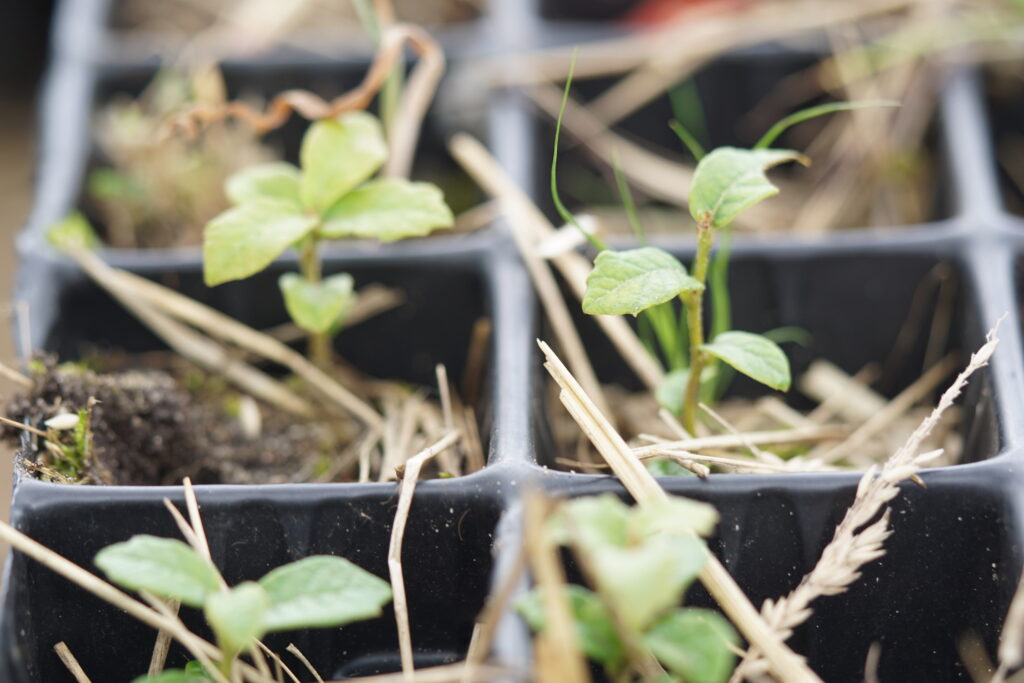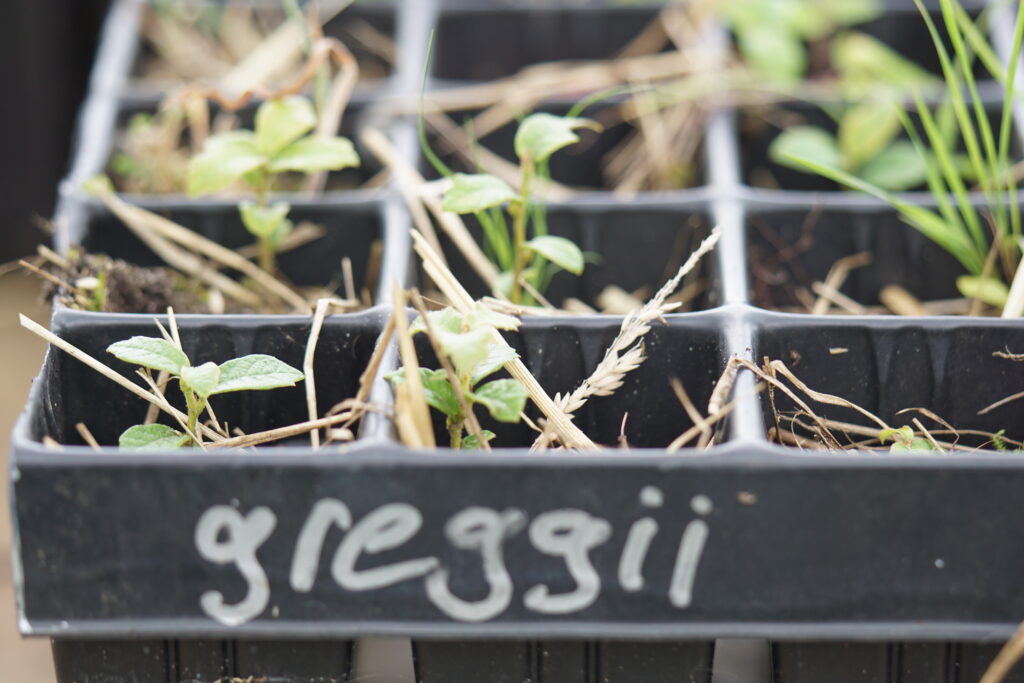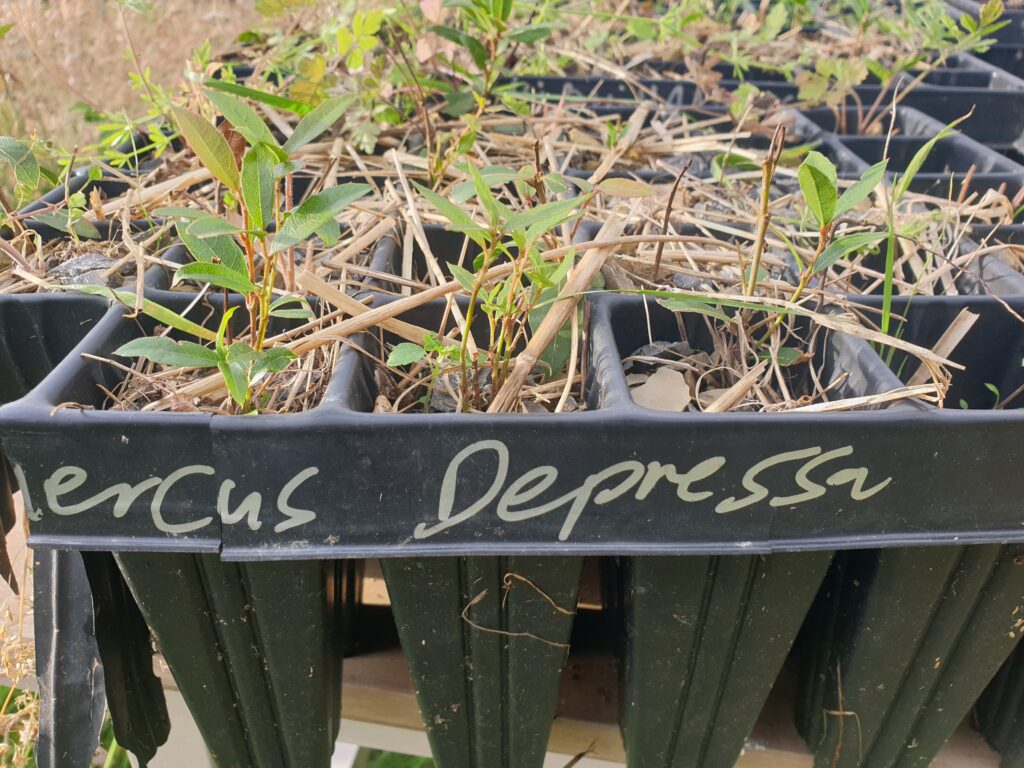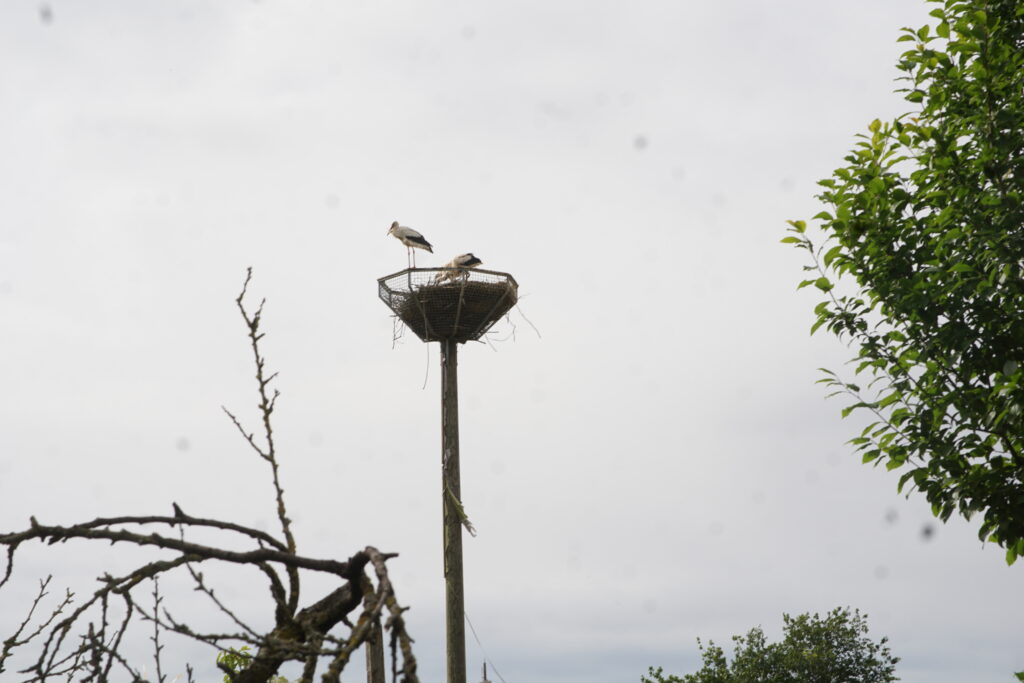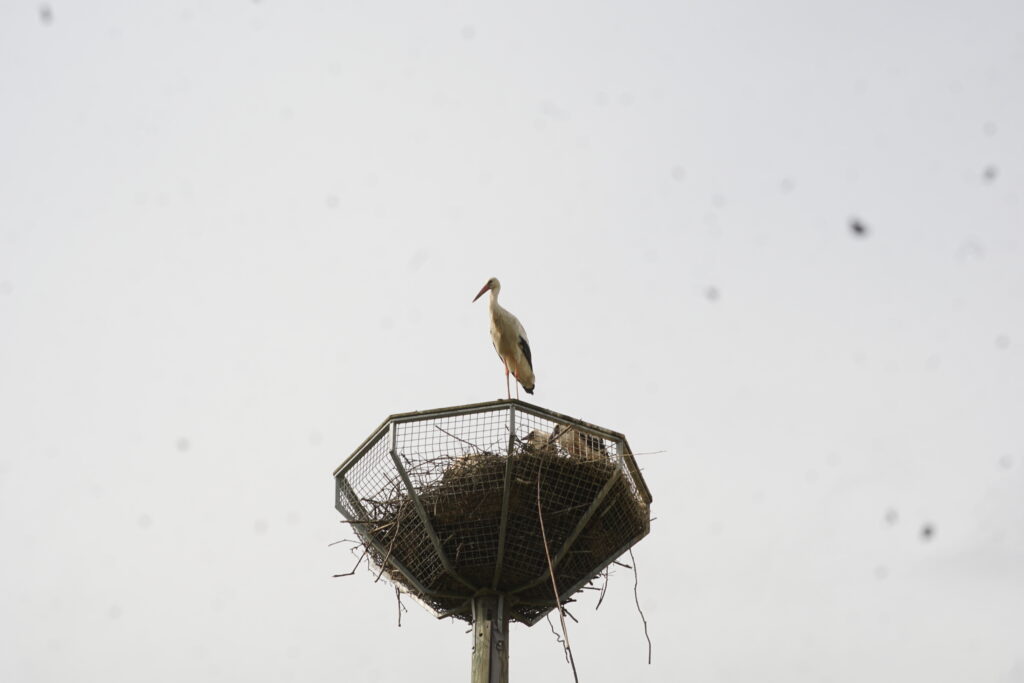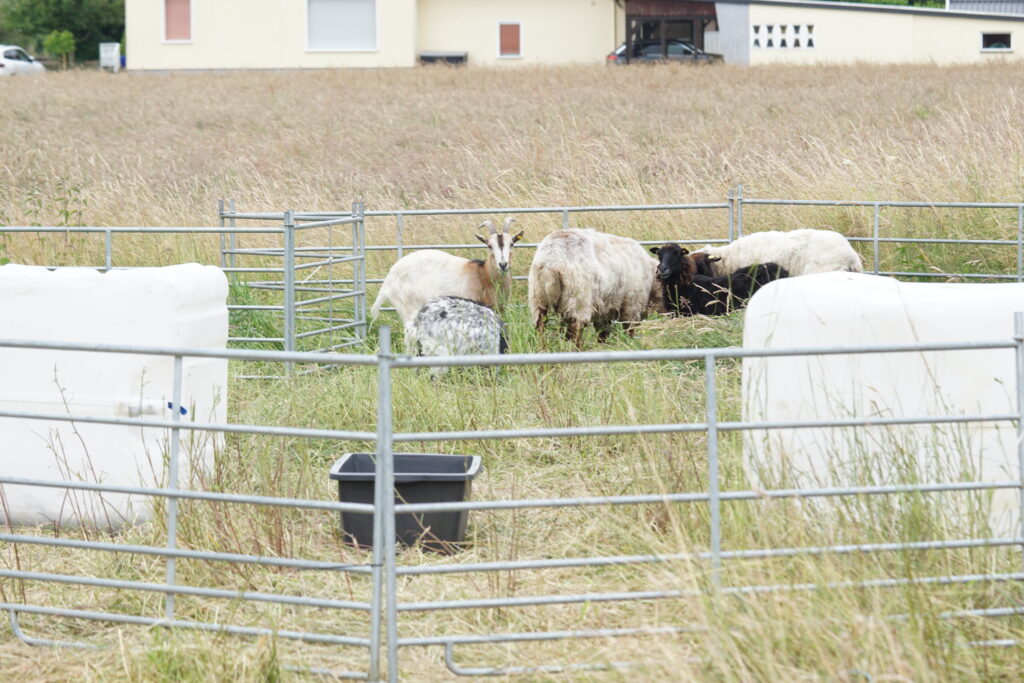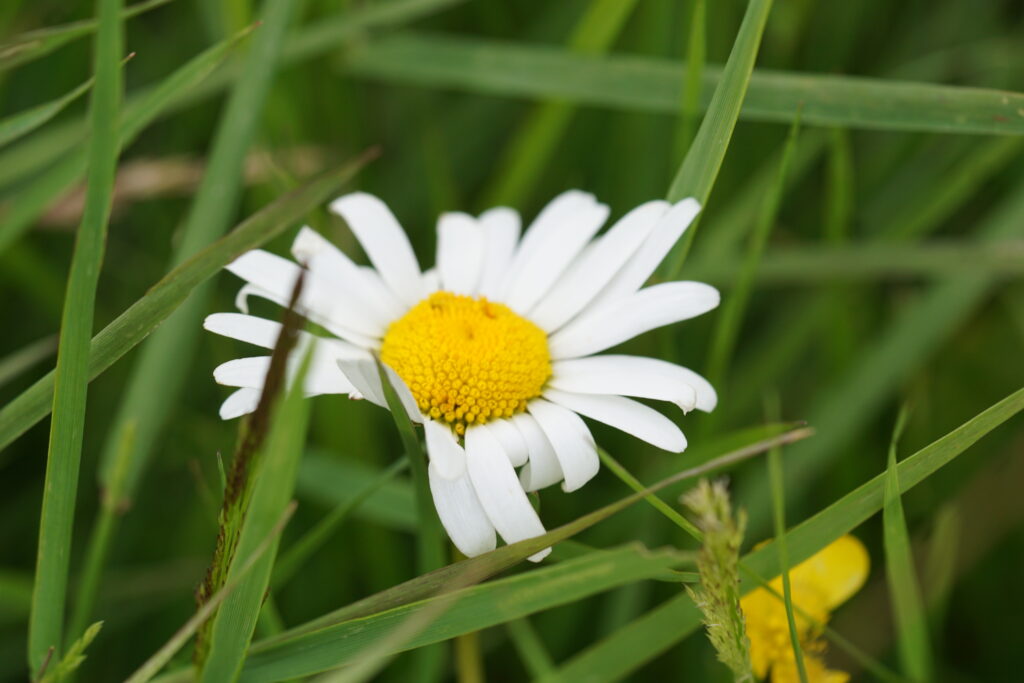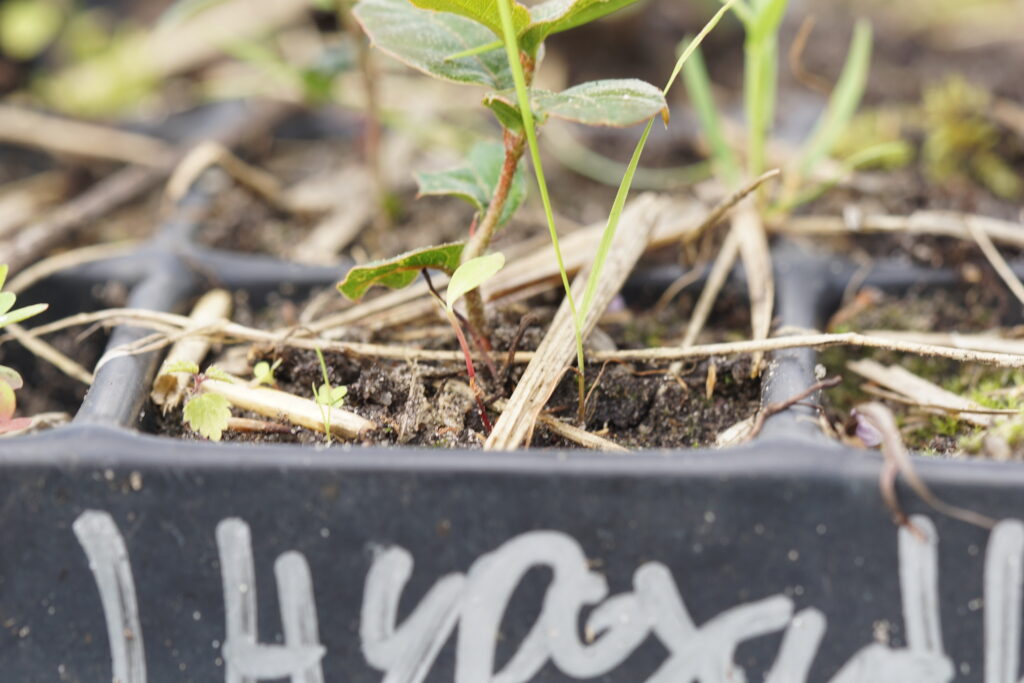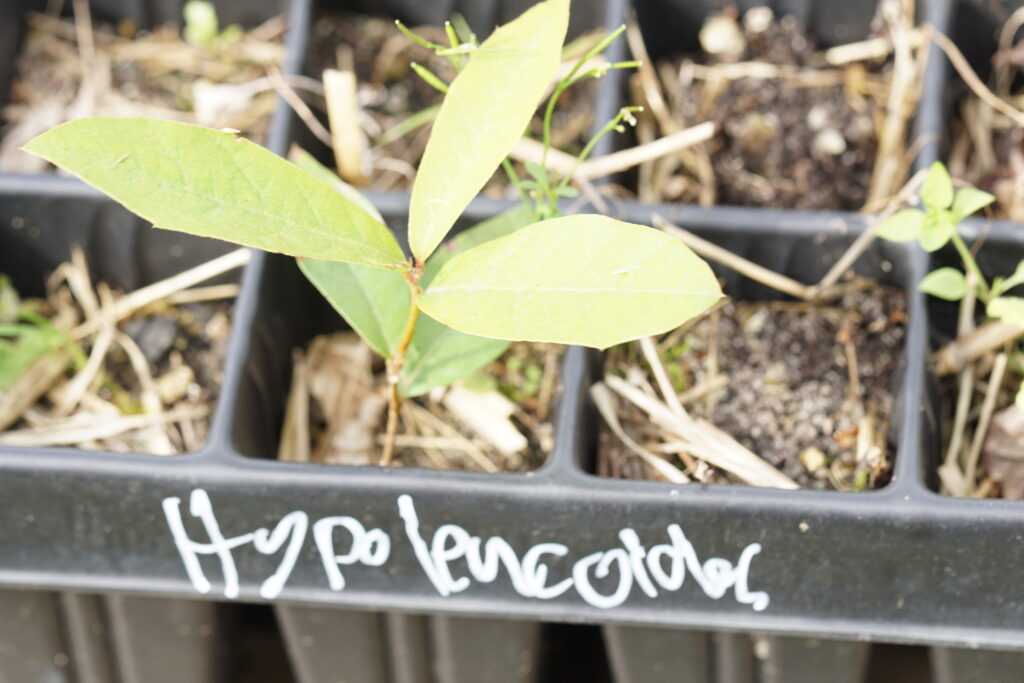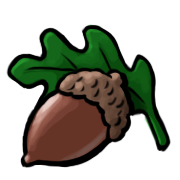16.06.2024: Mexican oak species
Mexican oak species
The work at the oak nursery is wonderful. It is grounding (in the truest sense of the word), it decelerates, and it is an absolute privilege to “work” with oak species, some of which have become very rare, and which sometimes only exist in small
corners of the world. Fortunately, there are many, many collectors all over the world, and we use the proceeds to finance part of our animal and species protection measures.
In the pictures you can see many Mexican oak species. The leaves look very different from those of oaks, but they are still Quercus specimens. Here you can see, for example: Quercus depressa, Quercus jolonensis (USA), Quercus hypoxantha, Quercus douglasii (USA), Quercus hypoleucoides, Quercus aff. miqhuihuanensis, Quercus sinuata var breviloba.
Animal company
You always have a lot of company when working at the oak breeding station. The storks rattle and rumble, it won’t be long before the two young storks fly out.
Right next to the oak station is our infirmary for our poultry. We currently have some ducks and chickens (along with their husbands/wives) here due to various fox attacks. Some were seriously injured and are treated 2 to 3 times a day.
They are slowly recovering and will fortunately survive the fox attacks.
Ducks in particular are very social animals (similar to geese),
that their partners need in everyday life, which is why they are treated here as a group. Two young ducks hatched by a wild duck are very funny (and fortunately unharmed).
One of the ducks appears to be a hybrid between a dwarf duck and a wild duck. The two tiny creatures do everything together and entertained me very well during the oak treatment today 🙂
Unfortunately, the foxes have taken various animals from the forest (the place is teeming with fox dens). Unfortunately, that’s part of it. It is impossible to completely fence off the 4 hectares of grace farm land from foxes and the puppies are also hungry.
Next to the infirmary (hermetically fenced) and the oak ward are some flowering meadows that we have planted. The meadow daisy is currently in bloom, as are St. John’s wort, meadow knapweed and meadow bedstraw.
Sheep and goats graze there on separate areas in the sense of staggered mowing. After mowing, they move on to other areas. On the claws and in the fur: seeds. In this way, they played cab for biodiversity.
And this is also wonderfully relaxing and alleviates the everyday hassle of “normal work” in the office.
Promoting diversity
Ok, Mexican oak species are not necessarily a benefit for the native fauna, but it still makes sense to preserve, nurture and care for these species too. Just like many other oak species from all over the world.
